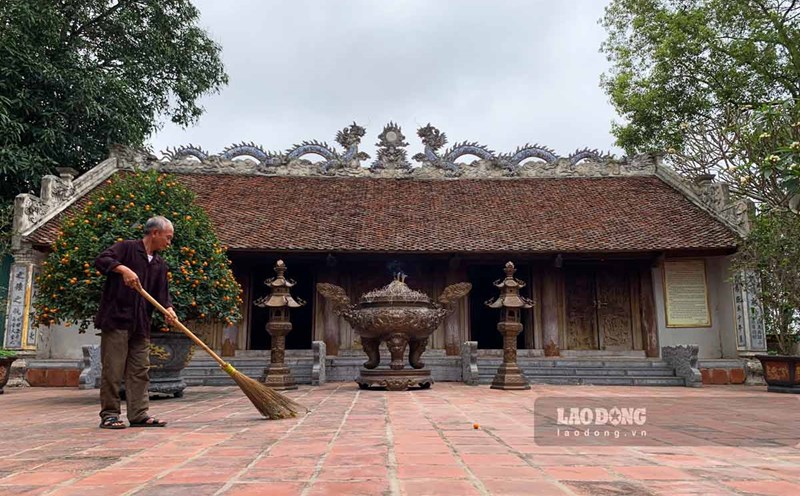The Temple of Saint Nguyen is located in Dam Xa village (Tien Thang commune, Gia Vien district, Ninh Binh province). The temple stands out with its unique ancient artistic architecture and was recognized as a National Architectural and Artistic Relic in 1989.
Mr. Pham Van Luu (73 years old) - the abbot of the Holy Nguyen Temple - said that according to legend in 1121, Zen master Nguyen Minh Khong left the city to return to his hometown Dam Xa to build a small pagoda named Vien Quang Tu to restore his sanity and heal people.
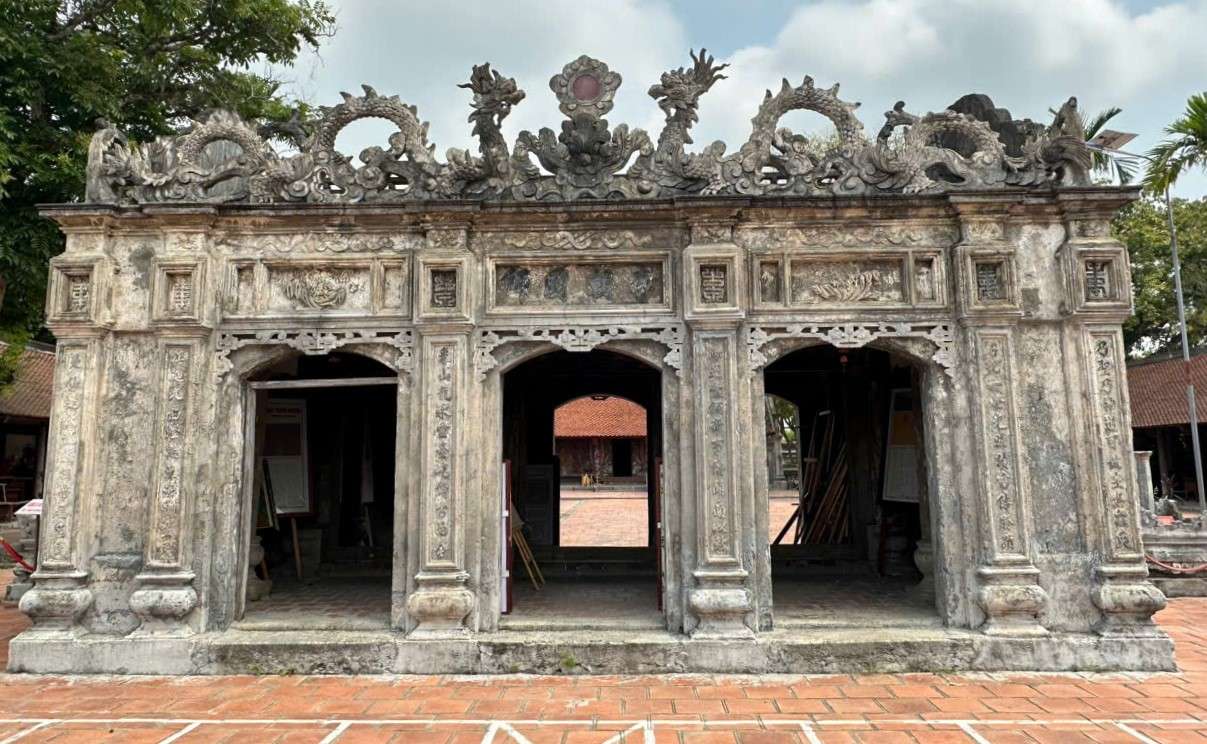
After Zen master Nguyen Minh Khong Toan was born, to commemorate his merits and virtue, the people honored him as Saint Nguyen and changed the name of Vien Quang Tu pagoda to Saint Nguyen pagoda.
The temple is built facing the South, towards the ancient capital of Hoa Lu, with a large-scale overall architecture of four buildings arranged in the style of "first-in-class, post-production". The items are built on a symmetrical vertical axis, combined with a long-range fence system in the North - South direction.
As soon as you enter the temple, visitors will see Vong Lau - the three-room building that is believed to be the former residence of Saint Nguyen. The project has an open architectural style, no doors, the front is decorated with the shape of "double dragon and moon charm", the back is carved with "feng ham thu", expressing unique traditional sculpture art.
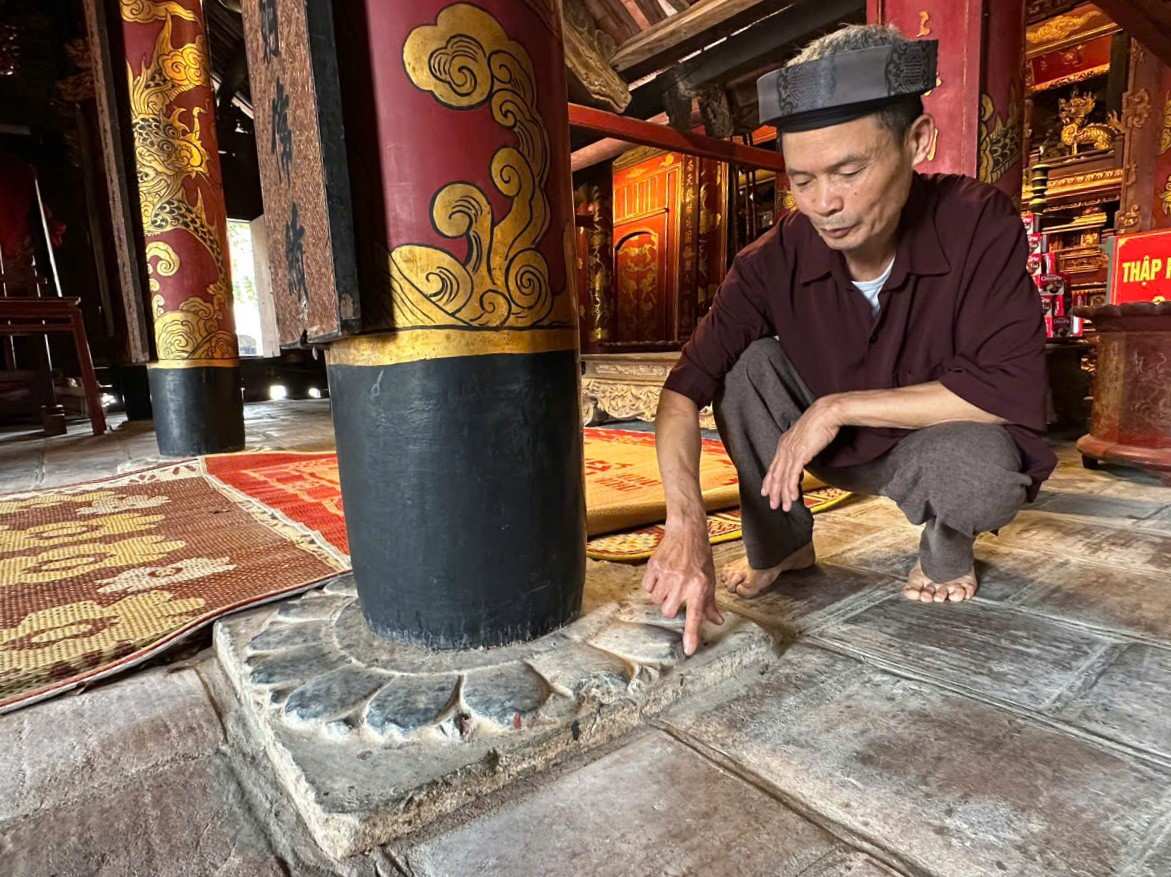
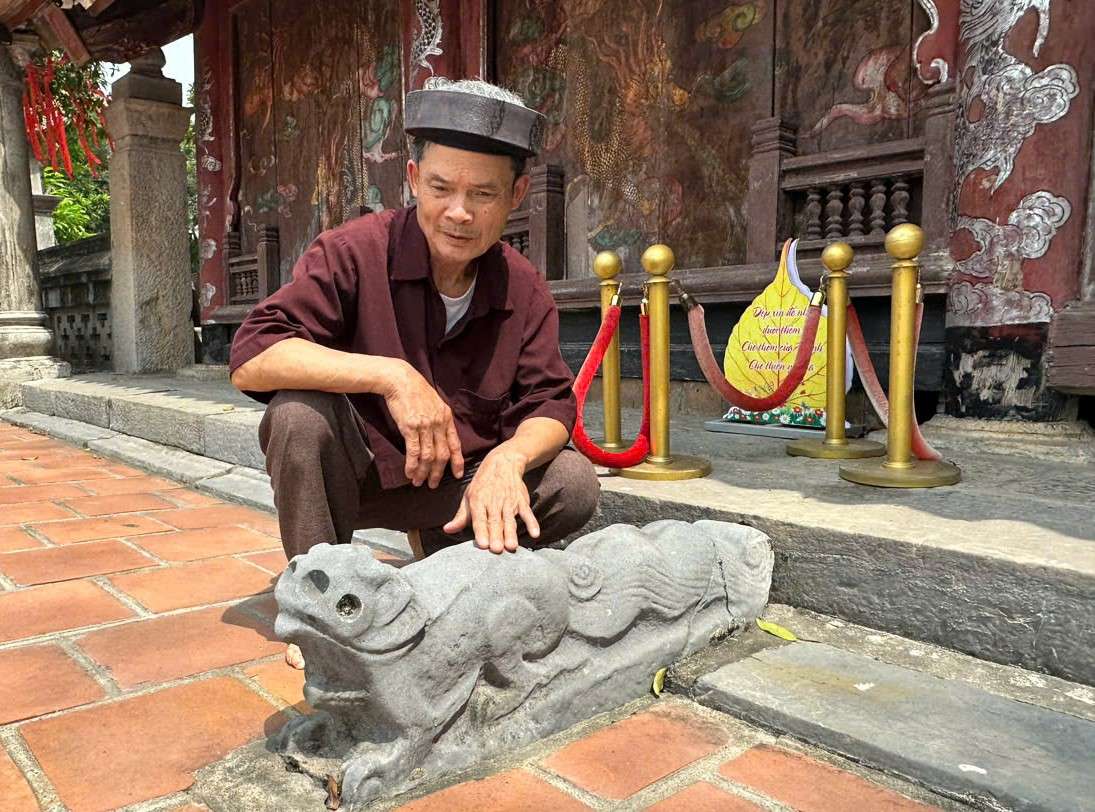
The main temple consists of 3 buildings connected to each other (Tien Duong, Trung Duong and Thuong Dien) all have 5 compartments with the way to link the architectural frames quite similar and the sets because the roof is made in the style of the edge, the roof of the roof, along with the pair of vertical bars, crossbar, armpit is accurate and firmly clinging to the column system placed on the stone pedestal should enhance the load of the temple.
On the western side of the main temple, ancient artisans cleverly show off the sophisticated sculpture of the splendid carving technique combined with the canals to create the image of a playful dragon and a dragon and a crab...
With the same carving technique, the eastern side is carved with the image of a very rustic and simple countryside, imbued with the folk tones of 17th-century art such as the scene of people riding elephants, women and men, the scene of girls by the lotus pond...
The final main architectural work of the temple is the bell tower. Although it is a 2-storey, 8-roofed architecture with 3 compartments, with two very narrow sides, there is still a nearly square space like the bell towers of 1 compartment, 2 wings. This is the earliest bell tower in our country dating back to around the 16th century.
According to Mr. Nguyen Van Ban (owner of the temple), the Saint Nguyen temple has undergone 5 major renovations as evidenced in 5 ancient stele documents still preserved. The first major restoration was in 1637 and took 10 years to complete. In the temple, columns, bars, and railings (ie the surrounding walls of the main temple)... are all made of ironwood.
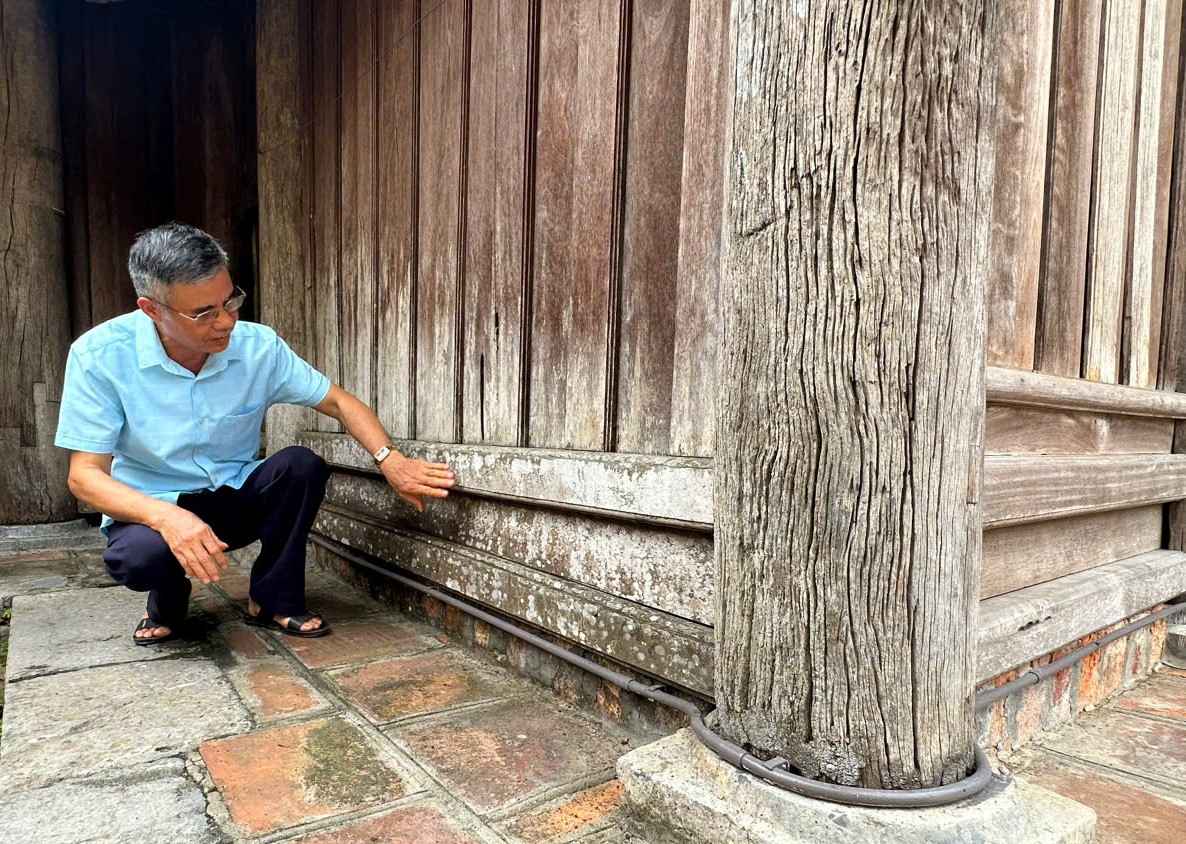

Not only outstanding for its ancient architecture, the Saint Nguyen Temple is also a place to preserve many artifacts of special historical and cultural value such as stone lanterns, pillars, ancient stone steles of the Le and Nguyen dynasties, two stone mounds dating back more than 1,000 years in the main hall, and stone stone stone foundations from the Ly - Tran dynasties. These are invaluable cultural assets, contributing significantly to the research of history, art and traditional architecture of the nation.
Ms. Vu Thi Duoc - Vice Chairman of Gia Vien District People's Committee said that the temple of Saint Nguyen has always been of interest to the locality for preserving and promoting unique architectural values. In recent years, the temple has become a destination that attracts a large number of domestic and foreign tourists, especially researchers and architects.
"Every year, the government checks the current status of the temple. If there are signs of deterioration, the district will promptly report to competent authorities to implement a suitable restoration plan, ensuring to preserve the traditional architectural features of the relic" - Vice Chairman of Gia Vien District People's Committee Vu Thi Duoc emphasized.

